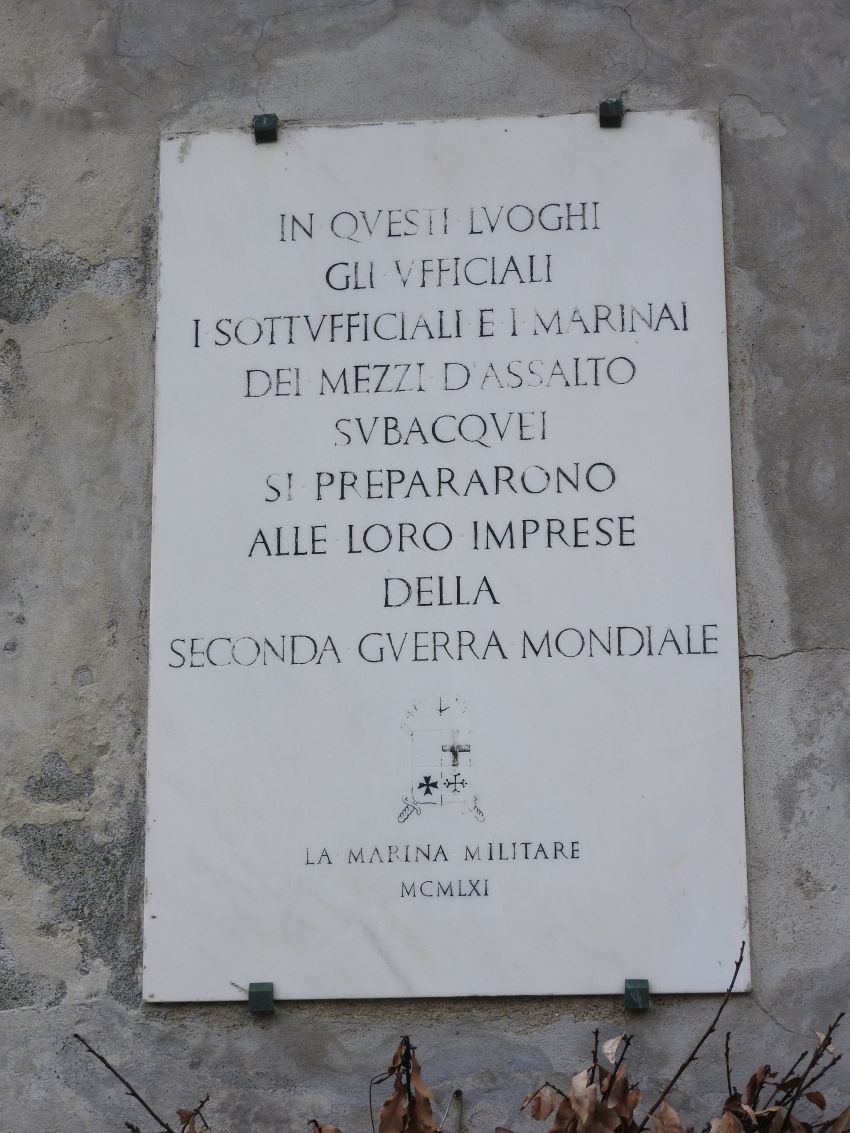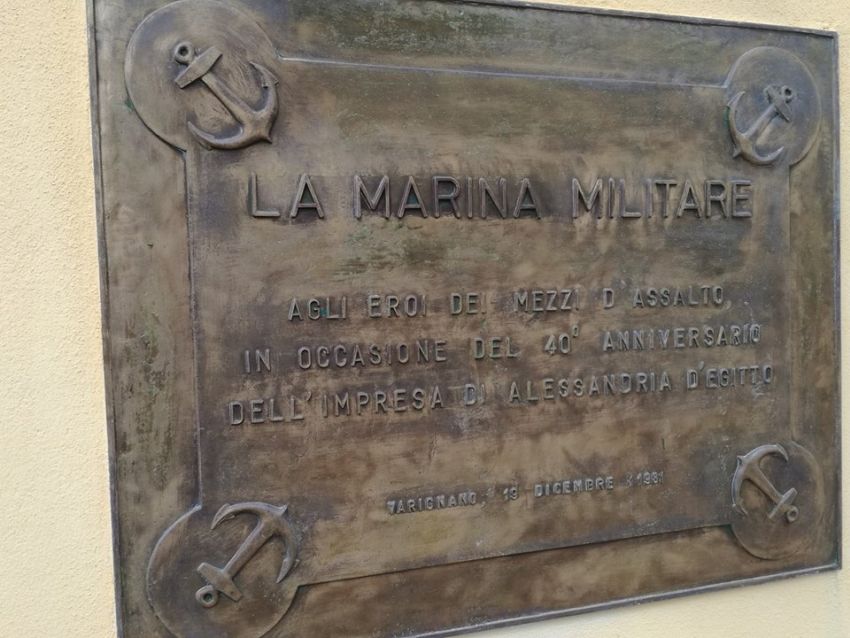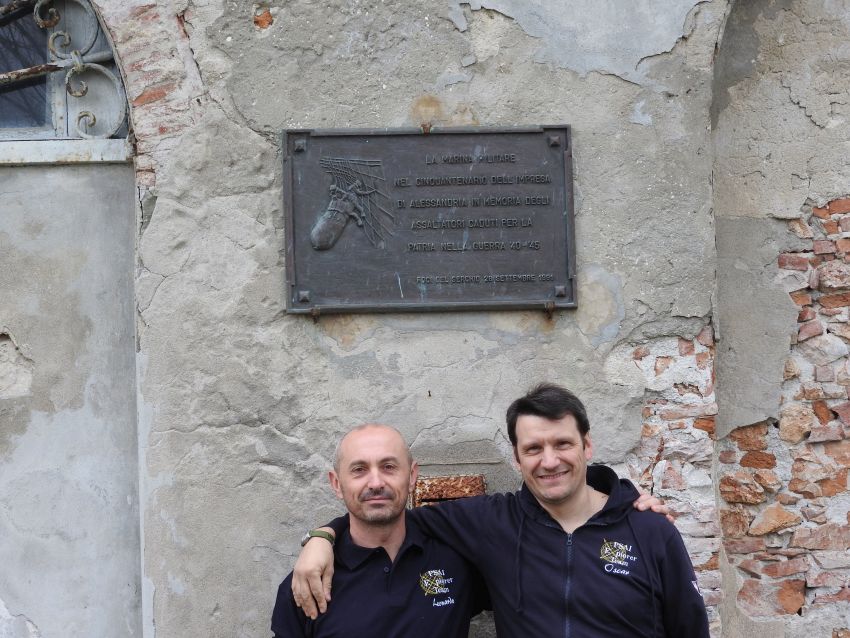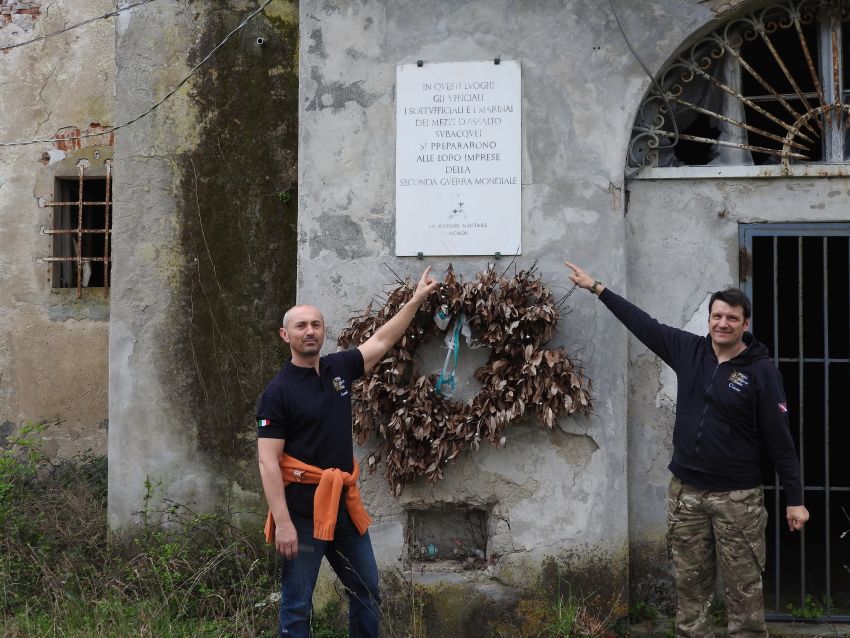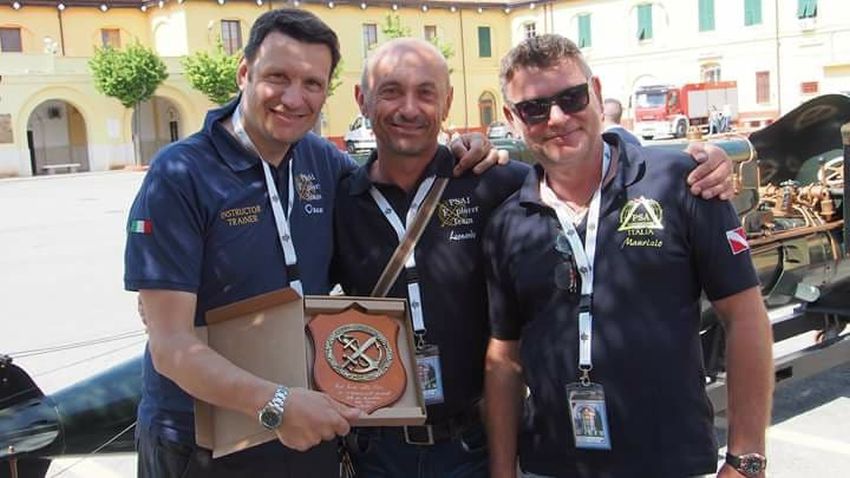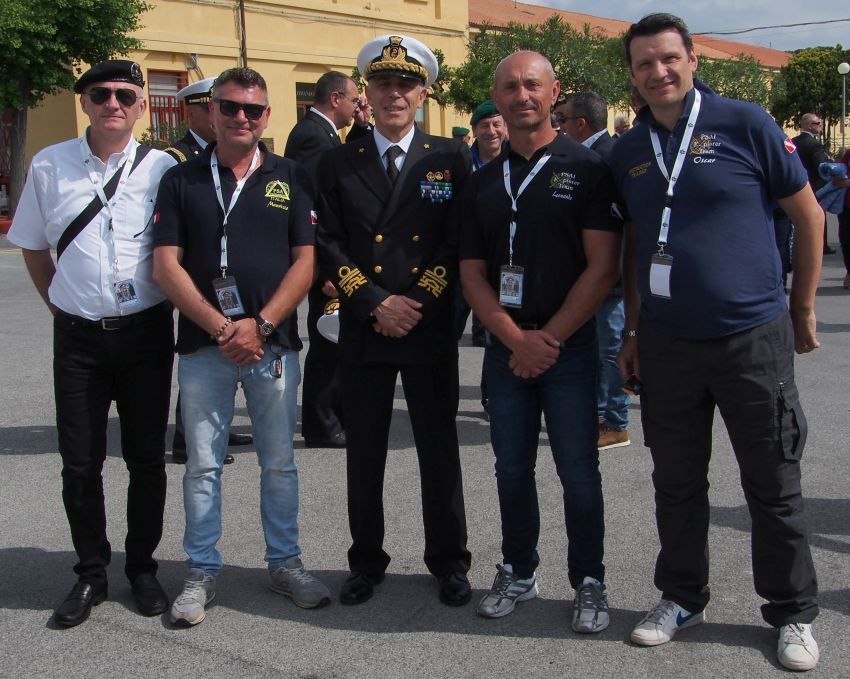The Varignano Fortress
Thanks to the days of free access to the historical sites organized by the Italian Environment Fund, the PSAI Explorer Team went to La Spezia to visit the Fortress of Varignano, home of the Underwater and Incursori Grouping, a special department of the Italian Navy, to visit this historical place rich of traditions, Il Comsubin. The Varignano Fortress is located in an inlet between two promontories, located in the Gulf of Poets between Le Grazie and Porto Venere.
Some historical mentions: Because of its particular position, the place was chosen as early as the 1st century BC for the construction of a majestic Roman residence. With the pestilence of Toulon and Marseilles in 1720, the Republic of Genoa built a hospital there. In 1888, the health function was completed and the Defense Forane Command was established. From 1910, it became the seat of C.R.E.M. (Royal Marine Corps Corps) of the Torpedinieri category, with the specialization Palombari, and that of Radio Telegraphists. In October 1945, the base hosted a new Command called Maricentrosub to coordinate the divers and divers in all the underwater operations related to the demining of the ports and the reactivation of the maritime communication routes. During the Second World War, it was the headquarters of the underwater raids departments of the Navy and finally, from 1952, it was the headquarters of the Underwater Command and raiders. The barracks are named after the Major of Naval Engineers Teseo Tesei, a gold medal for military valor.
Once arrived on the road leading to Varignano Fortress, we unexpectedly find several people in line, all united by the desire to visit the place, open in a very exceptional way and for the first time in its history. While waiting to get in, we met some veterans that spent their military career in the Navy Special Forces “Incursori di Marina”.
During our conversation, we introduced ourselves by telling them that we are a group of divers with a passion for historical research of World War II events. Veterans said they are part of the ANIM: National Association of “Arditi Incursori di Marina”. Continuing with the conversation, they told us about their sanctuary at Bocca di Serchio, where, until a few years ago was held the ceremony for the new “Incursori” that passed the particular training to become members of the Navy Special Forces units through the delivery of a particular green cap. This traditional ceremony is named “imbascamento”.
Mr. Gaetano began to tell the story of Bocca di Serchio and its “Guastatori”, heroes of the Royal Italian Navy, trained for the various missions in the Mediterranean during the 2nd World War, extending the speech to the history of the “X Flottiglia Mas”, an Italian Navy Special Force of that period and how it was born.
La Decima Mas “La Decima” and its legendary training center unit at Bocca di Serchio; let’s try to do some more history …
In Italy, the beginning of important developments on underwater military combat tactics dates back to 1935, when the Ethiopian war upset the Mediterranean political equilibrium that had existed until then: it was in that year that two Officers of the Italian Royal Navy, Major G.N. Teseo Tesei, and the Major G.N. Elios Toschi, began to manage a special project. Their intent was to bridge the disparity between the Italian Navy and the most powerful naval force of the period, which was the British Royal Navy, at that time strongly present in the Mediterranean Sea.
The 1st “Flottiglia MAS” was commanded by the Frigate Captain Paolo Aloisi, in charge of organizing the naval assault vehicles at the end of April 1939, near the Salviati family estate located at the mouth of the river Serchio.
The starting point was the renewed versions of the MAS and the torpedoes. In the idea of Toschi and Tesei, the torpedo became a means of underwater incursion.
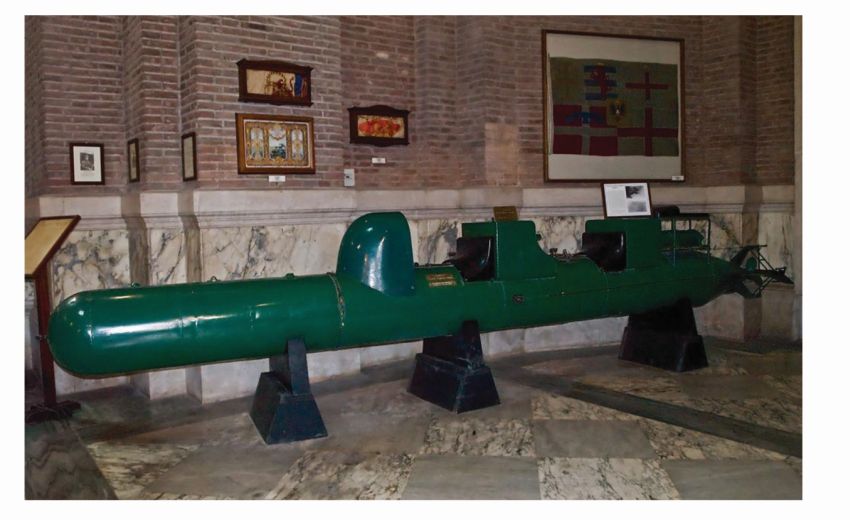
Thus, the S.L.C was born (slow-running torpedo). These underwater vehicles were electric torpedoes able to carry two men in addition to the detachable explosive head, which was fixed by the two operators to the keel of the enemy ship. This underwater vehicle was also known by the name of “maiale – pig”, deriving from the fact of having an awkward shape and for being slow and not very agile as well as often malfunctioning.
Initially, the “maiali” pigs were brought to the site of operations, generally in the vicinity of an enemy port, by particular submersible carriers. The SLCs have always used a submarine to approach enemy bases. The mistake was that at the beginning of the war the “maiali” were bound directly to the deck of the submarine, thus heavily limiting the dives of the same. This made the submarine easier to sight and visible to the enemy. Subsequently, pressure-resistant caissons were built into which the SLCs were transported, thus allowing the submarine to navigate with the utmost independence.
On the eve of the Second World War, the Italian Navy decided to resume studies for the operational use of the SLC (slow-running torpedo), as well as the secret experimentation of new weapons. The special unit that would have used these resources would, therefore, have been secretly covered. Given the particularity of this new underwater vehicle, the was the need of deploying active and capable men who led it, men of assault precisely: divers capable of leading the vehicle to underneath the enemy ships placing the explosive. The divers’ special unit was now commanded by Lieutenant di Vascello Junio Valerio Borghese, who had already been commander of the submarine Scirè.
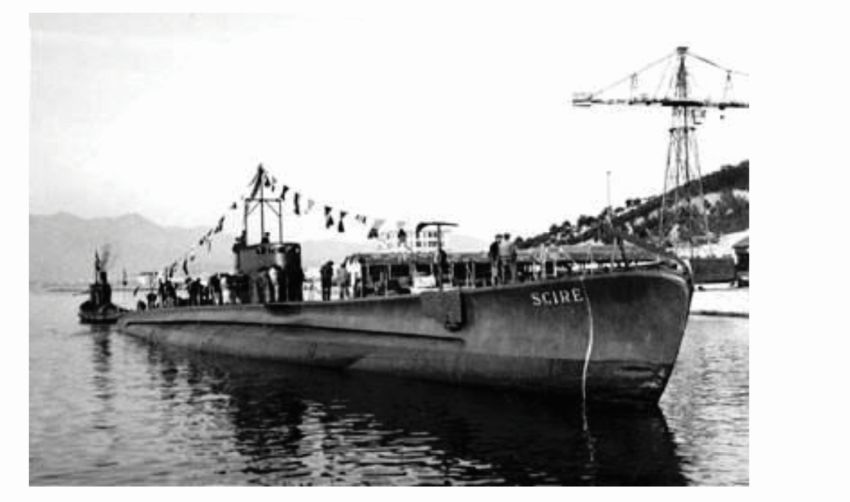
There was also the so-called “Gruppo Gamma” Gamma Group, or Uomini Rana (Frog Men). This assault group was trained to swim in shallow water carrying and placing the explosive under enemy ships. The department was commanded by the Lieutenant of Vessel Eugenio Wolk, who introduced the use of fins and webbed gloves. To conduct successful assaults, special equipment was needed, not only from the standpoint of offensive means but also from navigation devices (such as compasses) and accessories (such as depth meters): everything was subjected of a careful study by the Navy. In any case, the strong motivation and determination with which these men acted in action, usually directed against enemy’s ships and facilities rather than against men, always came into focus.
The first attack actions ended with results that were not encouraging, sometimes disastrous. In the first mission, called G.A.1, destined to attack the Bay of Alexandria of Egypt, on August 22nd, 1940, in the Gulf of Bomba, the submarine Iride, who had loaded four S.L.C. from the ship “Calipso” and the motorboat “Monte Gargano”, was sunk by the British Royal Navy with high human losses. Five sailors of Iride, torpedoed by a Swordfish, were saved by some men of the “Decima MAS”. The second operation against Alexandria of Egypt, the GA2 and another against Gibraltar, the BG1, ended without positive results and with less human losses: In the GA2 mission the submarine “Gondar” was sunk after an agony of several hours, while the second operation, conducted by the commander J.V. Borghese himself on the Scirè, was canceled when the submarine was already close to Gibraltar. With the sinking of “Gondar”, in addition to the crew, the Commander Giorgini and several “Incursori” (frog men) were also taken prisoner by the British.
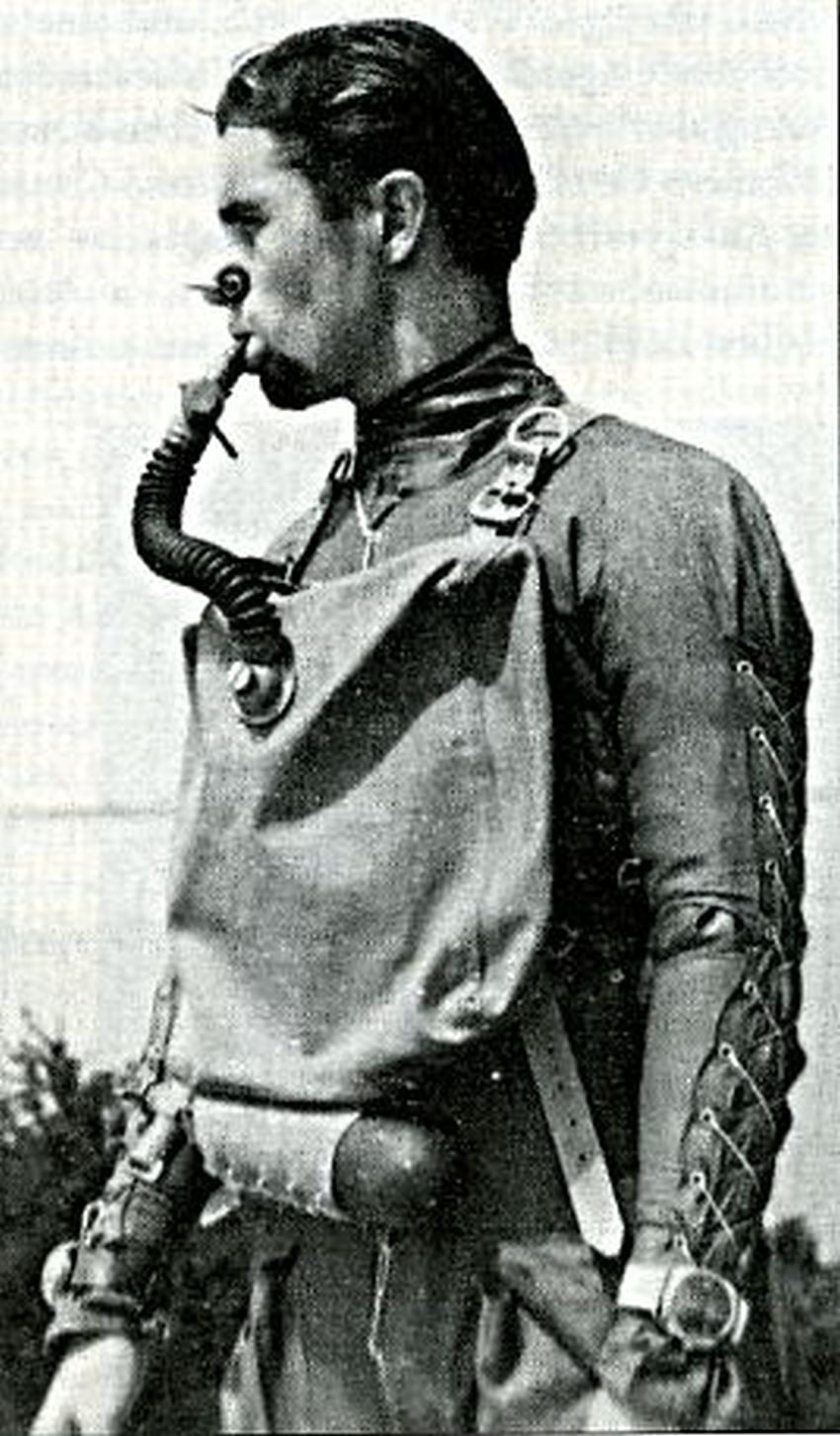
On October 29th, 1940, the submarine Scirè, still commanded by Borghese and with three SLCs on board, tried again an operation called B.G.1 against Gibraltar; the same was interrupted and retried with the name B.G.2 on the 30th of the same month. Two “Incursori” were immediately intercepted by an enemy boat and to do not arouse suspicion they brought their SLCs underwater. SLCs had breakdown not allowing them to ascend. The two assaulters abandoned SLCs and reached swimming the Spanish coast. A second couple who piloted another S.L.C. managed to get to the mouth of the port, but, at the time of the dive the breathing gear wasn’t working properly. Nevertheless, they managed with great ability to reach 70 meters from the battleship Barham, overcoming the anti-torpedo nets placed in its defense. They had to desist from sinking the boat and swam to the Spanish coast. The mission was thus a total failure, despite having demonstrated without doubt the ability of the Underwater Incursori to penetrate a well-guarded enemy port.
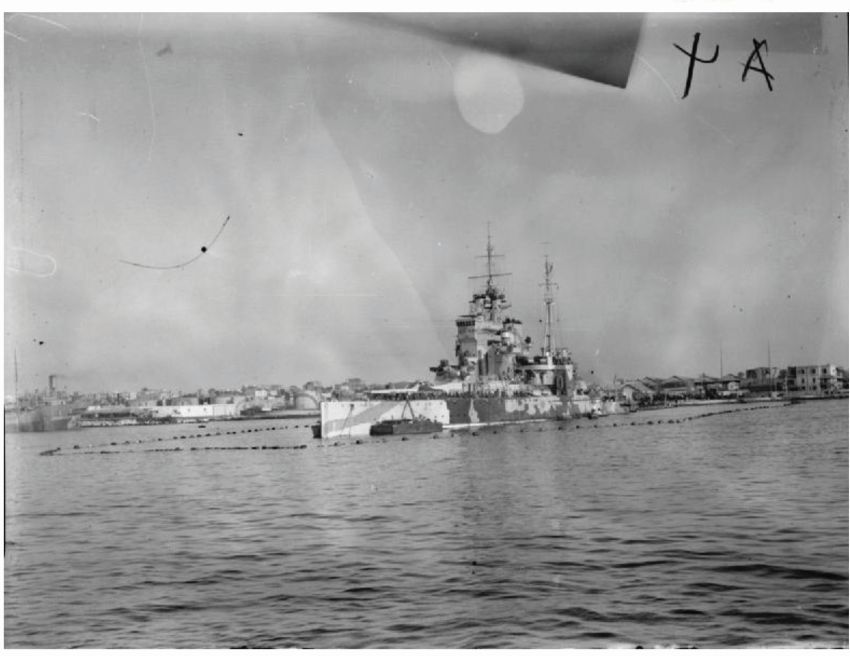
The ship HMS Queen Elizabeth surrounded by anti torpedoes networks in the port of Alexandria in Egypt before the attack.
The most famous of the actions of the Xª Flottiglia MAS, as in the meantime had been called this Special Unit of the Royal Italian Navy, was the sinking of the British battleships “Valiant” and “Queen Elizabeth” and the oil tanker “Sagona”, moored in the port of Alexandria, Egypt December 19th, 1941; an action that has become famous also as the Enterprise of Alessandria. The night of December 3rd, 1941, the submarine Scirè, commanded by the Lieutenant Junio Valerio Borghese, a gold medal for Military Value later, left the naval base of La Spezia for a mission called G.A.3.
On December 14th the submarine headed for the Egyptian coast for the attack expected on the night of the 17th. A strong storm however delayed the action of a day.
On the night of the 18th, with better weather conditions, taking advantage of the arrival of three destroyers that forced the British to open a breach in the port’s defenses, the three SLCs, each driven by two “Incursori”, entered the base to head towards the fixed objectives. The “Incursori” had to come under the keel of the ships identified, place the explosives and leave the area heading to the ground independently trying to reach the starting submarine, which would have expected a few days later off of Rosetta.
The “Incursori” Durand De la Penne and Bianchi on the SLC nr. 221, pointed towards the British battleship Valiant. Bianchi left because of illness, but De la Penne ended his action by placing the charge under the ship’s hull. At the scheduled time the explosion tore the hull of the battleship causing its flooding and sinking. Martellotta and Marino, on the SLC nr. 222, led their attack on the oil tanker Sagona.
Overall, four ships were severely damaged in the action: in addition to the two mentioned, there was also the destroyer HMS Jervis, moored alongside the Sagona. Antonio Marceglia and Spartaco Schergat on the SLC nr. 223, at the same time and in a “perfect mission”, attacked the battleship Queen Elizabeth, to which they placed their explosive charge.
In light of the activities conducted on December 18th, 1941 of these brave men of the Royal Italian Navy, the Italian fleet suddenly found itself in clear superiority over the British, which had not been any operative battleship: the HMS Barham had in fact been in turn sunk by a German submarine on November 25th, 1941. The British Fleet, therefore, at the end of 1941, had only four light cruisers and some destroyers.
Winston Churchill, Prime Minister of UK, at the time made the following statement: “… six Italians equipped with low-cost materials has compromised the military balance in the Mediterranean to the advantage of the Axis. ”
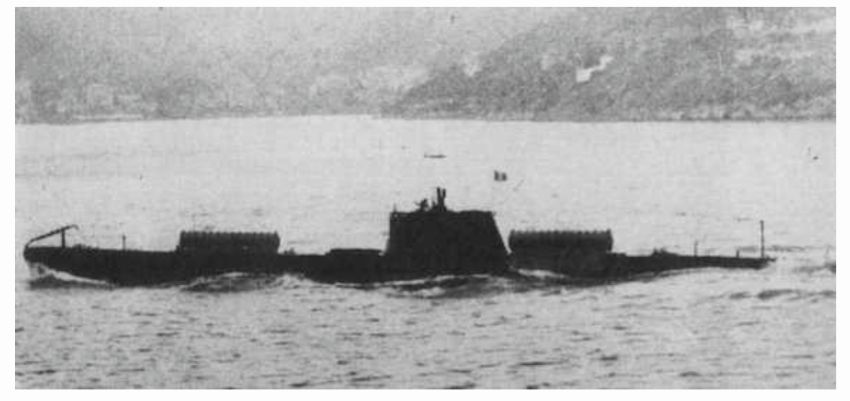
The submarine Scirè with the containers for three assault vehicles SLC on the bridge deck
Let’s go back to the present day.
After having been documented, we began to make numerous visits to the house where we knew that Gamma Men had trained for the missions with their SLCs, near the Salviati estate, very close to the Serchio estuary, as reported by the friends of the A.N.A.I.M.
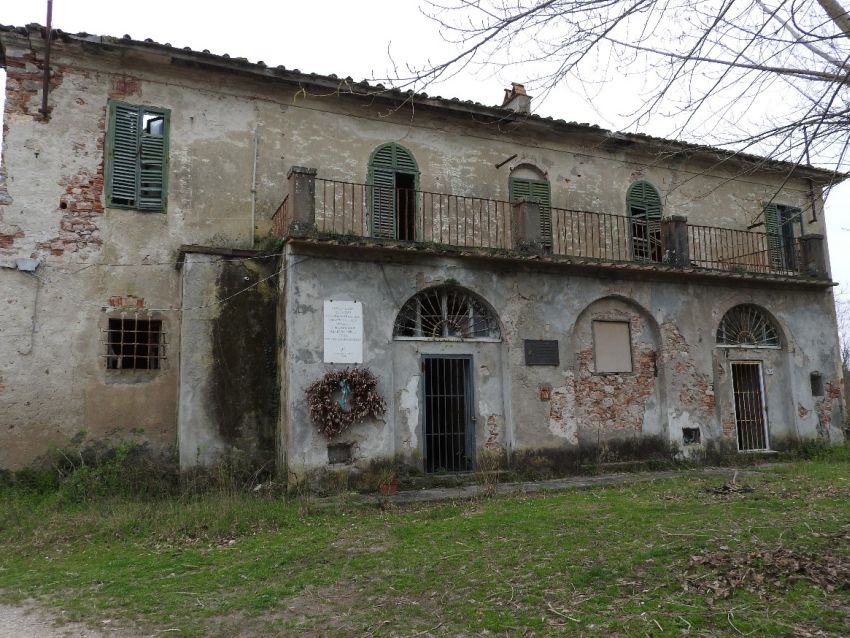
Thus, as a first step, we started searching the ground with our metal detector expert Lucio, both inside the courtyard of the house, and in the outer perimeter, moving the surrounding land to the palm in search of objects left behind, or lost occasionally by the staff stationed in the secret base.
Leonardo, Oscar, Maurizio, and Egidio, went on the banks of the Serchio and near the mouth of the sea to plan where to start the first researches, which were therefore conducted both in the river and at sea.
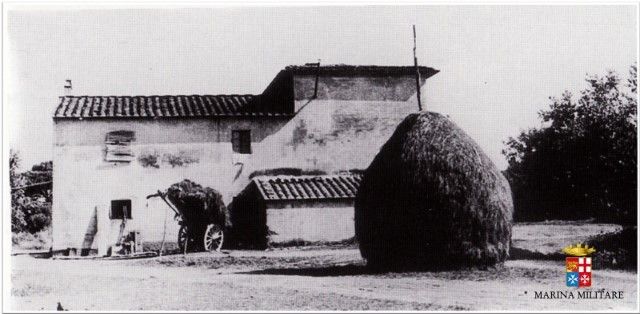
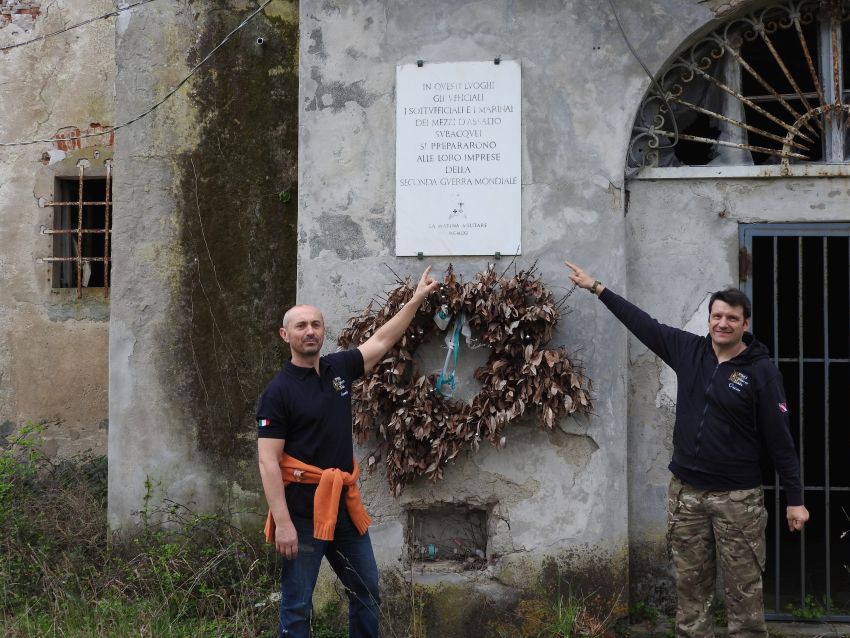
Once the inspection was carried out, we began the search by dividing us into two groups, one that looked at the bottom of the river Serchio up to the mouth and the other in the stretch of sea where the “frog-men” were trained with their S.L.C.
The researches continued for a few days: Oscar and Leonardo, after numerous interventions in the river Serchio, plumbing the bottom with some difficulty, due to the current and to the silt that made precarious the visibility, found under the mud, helped by fate, some objects, almost unrecognizable and most probably dating back to the second war period.
No objects have been found at sea. Meanwhile, Lucio, our expert in metal detectors, had made finds such as shaving razors, medallions of the patron saint of the soldiers, buttons of shirts, tubes of shaving cream and some coins.
In the evening, during dinner and especially after dinner, we took stock of the situation and studying the map of the area with some photos of the time, we noticed that the place where we found the objects in the water was right next to the house where there was the “Incursori” base. By now we had reached the last day of research and, as planned the night before, we still divided into two teams: Oscar, Leonardo and Lucio with metal detectors began to search according to the areas assigned in the perimeter / external fence of the house; while Maurizio and Egidio got back to explore in the water, where they had left a marker buoy the day before to continue the search.
The memory is still alive in thinking of when, on the right side of the road that leads out of the house of the “Uomini Gamma”, the metal detector sounded vehemently. We dug deep, thinking it was absolutely nothing, or that it was an object of our day. Something appeared in the earth, a small iron mass, an unusual form. That object, after being well cleaned, revealed itself in all its historical importance and to our utter amazement. We noticed that it was an Iron Cross, the iron cross, a very rare German decoration to be found on Italian territory. Thus, we continued our search for the rest of the day, stimulated by this finding.
What intrigued us most was the German decoration found oddly in this secret base. Research on the web led us to some photos related to Commander J.V. Borghese (Commander of the Scirè submarine), decorated with the gold medal to the military value of the Navy and Commanders of the Assaulters, who carried on the uniform also an Iron Cross.
With the doubt that it was an actual historical fact, in the following days we contacted our friends of the A.N.A.I.M. (National Association of Arditi Incursori di Marina) in La Spezia. Invited to their headquarters, and proud and honored for the invitation, we showed the objects found.
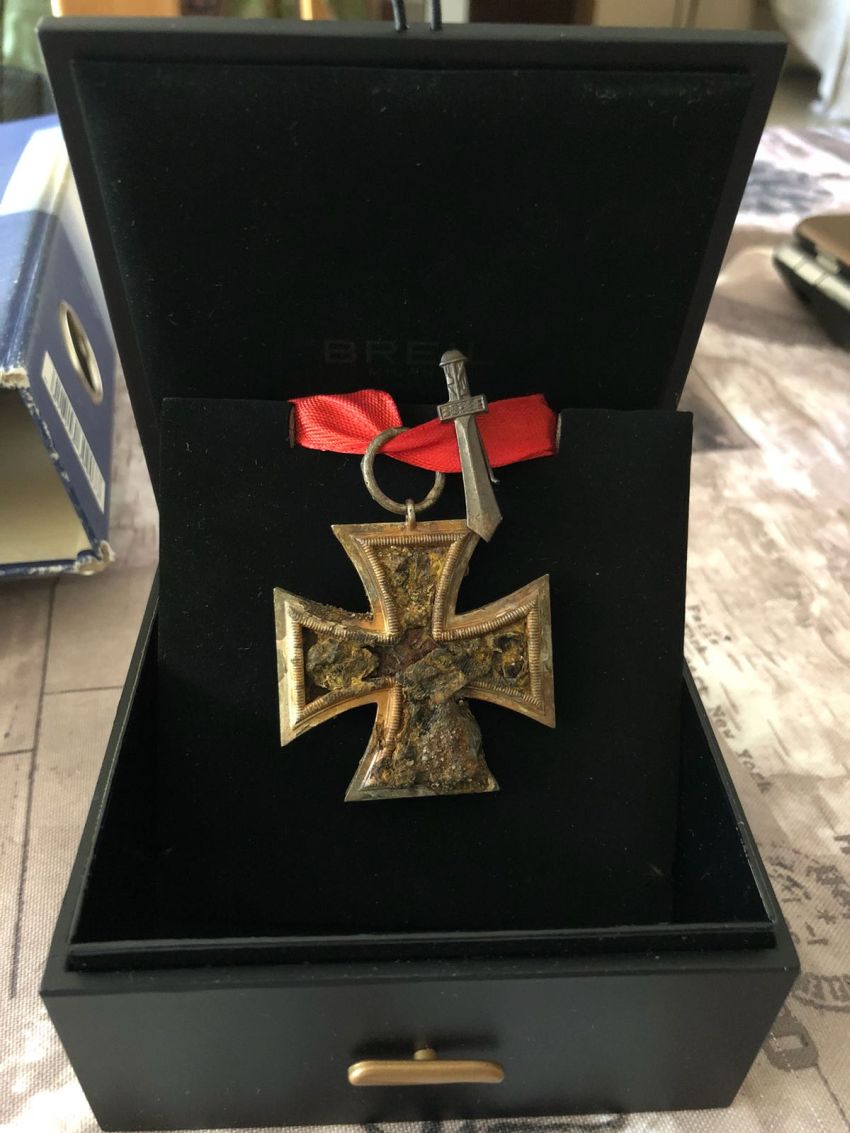
In the following days, thanks to A.N.A.I.M. and its members, we succeeded in getting in touch with the still alive son of Commander Borghese, that told us some of the deeds of the father related to the mission of Alexandria in Egypt. He told us that at that time Bocca di Serchio was a secret base, and his father often went there to attend and verify the preparations and training progress of the “Incursori” for the Egyptian mission in Alexandria. Returning to the German decoration, the son told us and the same thing was confirmed by our history expert Mauro, that there was no German military personnel inside the secret base, and that the only one to have that decoration would have been only Commander J.V. Borghese. In light of this, we can only assume that the rediscovered German decoration could belong to Commander Borghese.
The days in La Spezia at the A.N.A.I.M. has been unforgettable, thanks to the photos, the memories and the friendliness of its members: These men continue to carry on with honor and respect the traditions of the Arditi Incursori of the Italian Military Navy. We thank the A.N.A.I.M. National Secretary Gaetano Zirpoli, Antonio Franzese, and for reasons of confidentiality, we only put the name of another precious helper, Mr. Mauro. They helped us to put together the pieces of the history, also helping to understand the events and trainings that were performed in Bocca di Serchio during the Second World War, in addition to how the mission was prepared in the Port of Alexandria of Egypt, which with great sacrifice made epic the undertakings of the assault vehicles of the Royal Italian Navy and its Men.
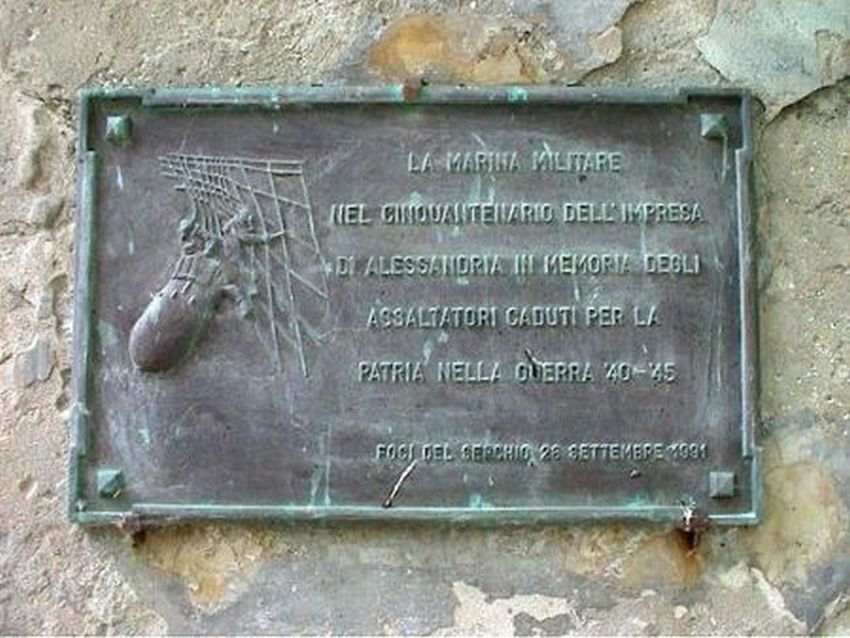
Through the real contribution of the A.N.A.I.M. (National Association of Arditi Incursori di Marina) all the objects found were donated to the Italian Navy, so that they are kept inside the Museum of the Base of Varignano, so that it can remain a testimony of these heroes trained at Bocca di Serchio base.
The PSAI Explorer Team:
Leonardo Canale responsible and licensee for PSAI Italy, and Maurizio Bertini PSAI Italia Manager and licensee; web research and field research.
Oscar Lodi Rizzini, technical and recreational PSAI Instructor Trainer; the nose of the group back from numerous expeditions – the one that from the roughness of the bottom can always find something.
Egidio Roncon, PSAI Technical Instructor specialized in explorations, back from many expeditions with Oscar, he is our expert in translations and field research.
Benedetto Bertoglio, our expert in the metal detector.
Renato Aglio PSAI Instructor, our technical expert in photography.
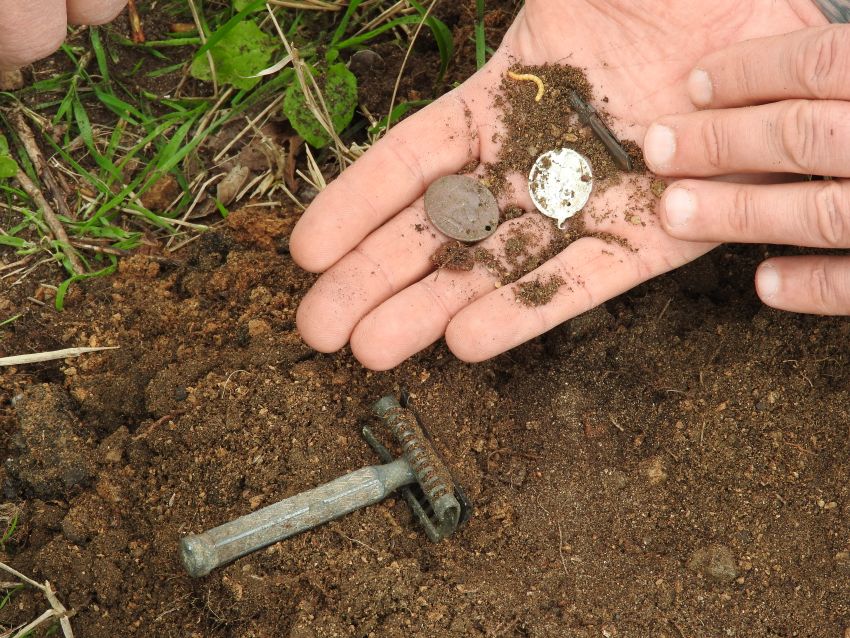
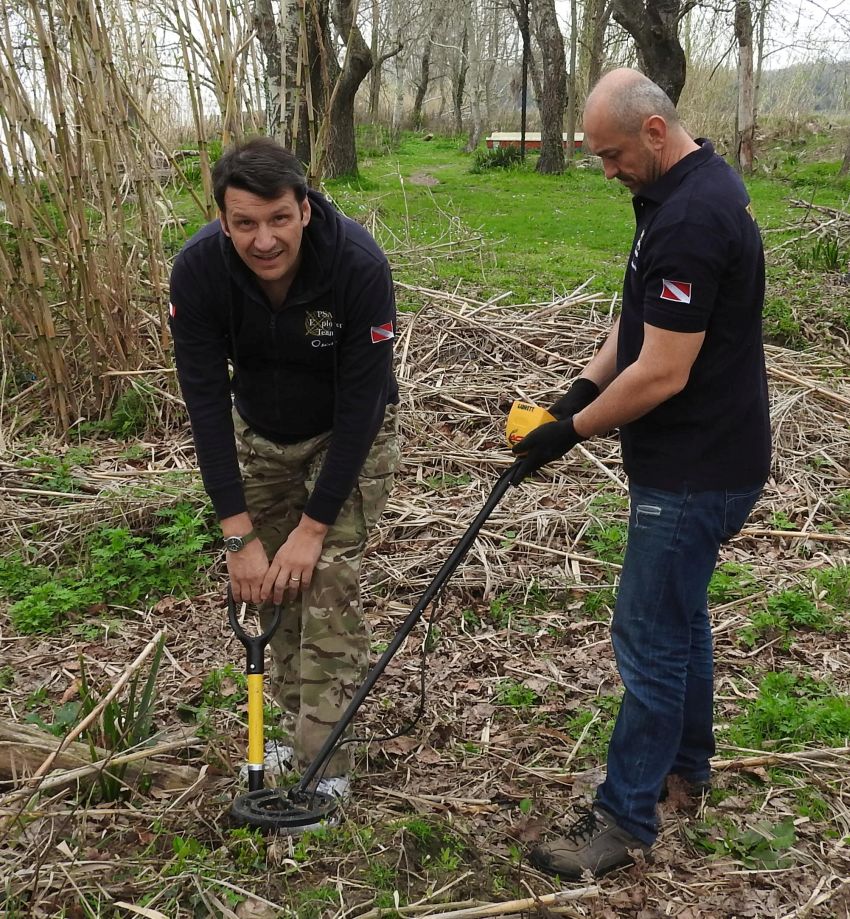
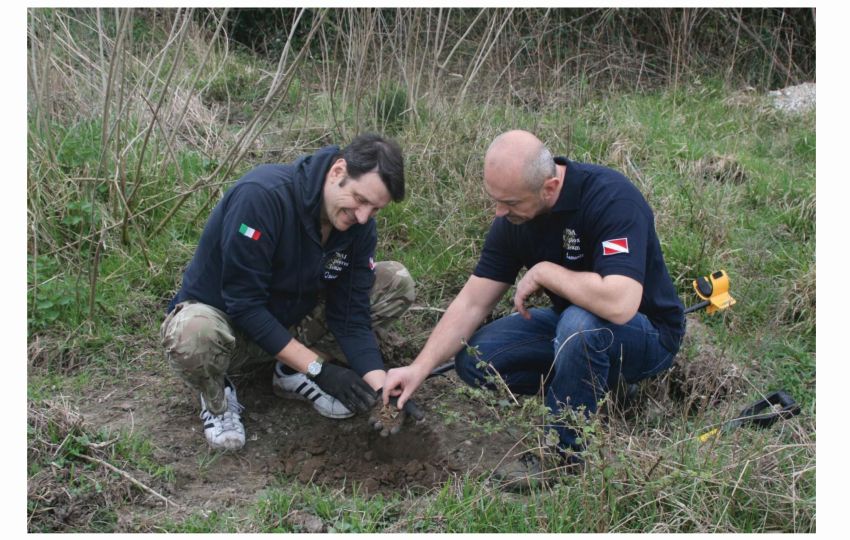
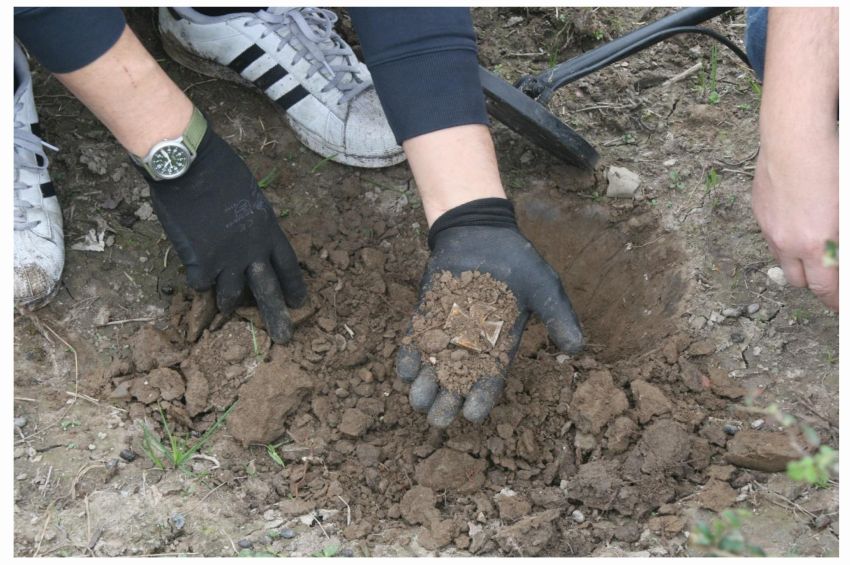
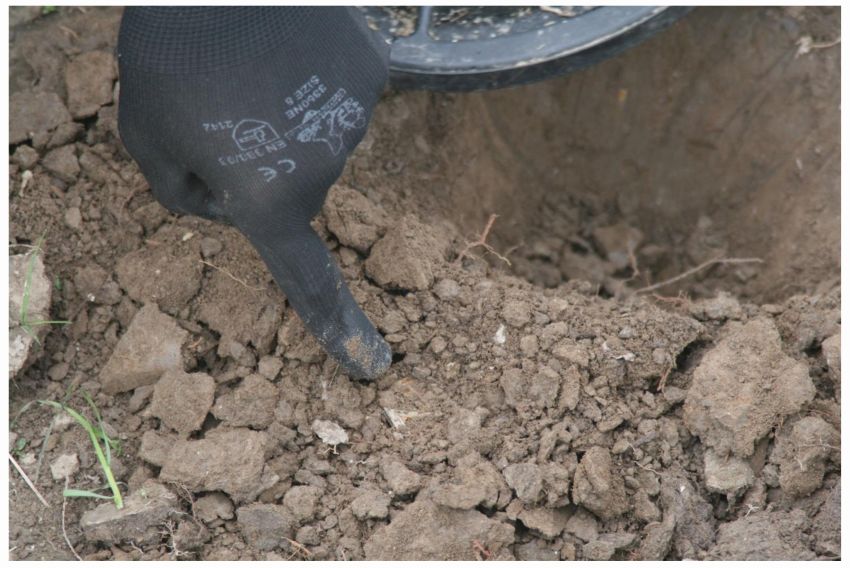
Additional Photos:
